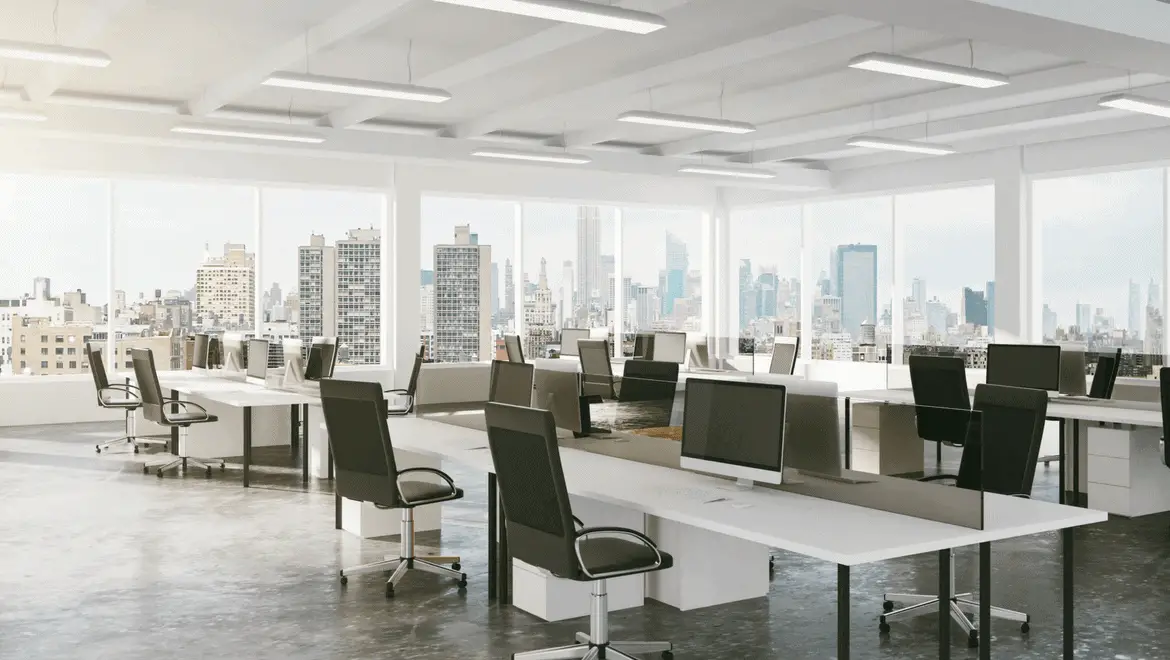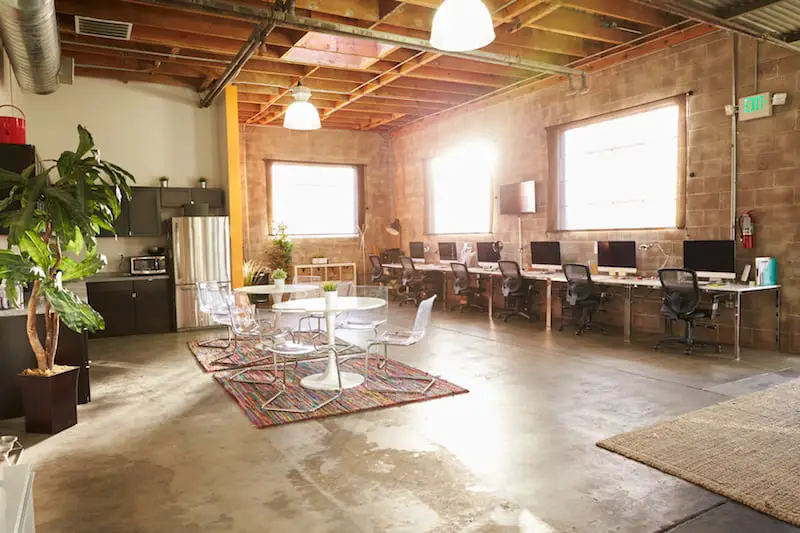Now seems as great a time as ever to try hot-desking at your workplace. But, before you get too ahead of yourself, know that hot desking involves wholesale changes to the entire operation of your business. Thus, it takes time and some careful thinking before you make up your mind on what to do. What kind of hot-desking questions do you need to mull over?
The hot desking questions you must answer before initiating are as follows:
- 1. Do you have the staff size to make hot-desking work?
- 2. Will it save your company money and how much?
- 3. Do you have a workplace conducive to hot desking?
- 4. Can you change your employees’ schedules to more shift-based work?
- 5. Can you trust your employees to work alone or with one other person?
- 6. Are you going to update company policy with etiquette rules and more?
- 7. Would you want hot desking to be a temporary or permanent solution?
- 8. What are your goals with hot desking?
- 9. Will you listen to your employees’ concerns and complaints as these arise and do something with them?
- 10. Are you willing to admit if something isn’t working?
In this article, we’ll cover each of these 10 questions more thoroughly, giving you pointers and talking points for each. While the decision to try hot desking may ultimately be your own, remember that you must take into consideration your business processes and employees as well.
Let’s begin.
10 Crucial Hot Desking Questions to Answer
1. Do you have the staff size to make hot-desking work?
The practice of hot-desking involves the use of workstations being shared by a group of employees. If you have a lot of staff working at your office/team or company then, hot desking may make less sense.
Do you have the space to accommodate all your employees? Instead of assigning every desk to one employee, perhaps twenty employees working one rotation (two days per week working in the office) or shift can share 10 – 15 desks.
One of the main selling points for hot-desking is to save money (something we’ll talk about next). If a business is incentivized to utilize hot-desking for financial benefit but it is not a cultural fit, they’re going to hurt financially in the longterm.
Hot desking may work best for a team or office with under 50 employees. This way, you can rotate everyone so there’s a reasonable amount of people working in an office at any one time. Do you agree? Leave a comment below.
2. Will it save your company money and how?
It’s possible to reduce costs at a rate of 30 percent through hot-desking. That’s not a guarantee, though. It’s wrong to assume that just because you’re enabling your employees to work in a hot-desking environment that the money savings will happen automatically.
You have to have a plan for saving money and how it will happen. Perhaps you’ll pocket more cash by reducing spending on resources like desks, phones, and computers for multiple people. Maybe you save money on electricity since you don’t have to keep the whole building lit while one or two people work. Also, there are fewer electronics running. You could even save cash by moving to a smaller office.
To get a true feel for how worthwhile hot-desking is, you need to do a financial assessment. Go back through the months within the last year or so. How much are you spending on computer equipment? Other office supplies? Electricity? Office space? Miscellaneous expenses?
Now, see what your monthly office bills would look like if you reduced or eliminated some of the above expenses. Are your savings great enough to warrant hot desking? If not, you might want to consider something else instead. For me, the best KPI to assess this is: total real estate costs divided by actual occupancy. This KPI assesses the efficiency of your real estate.
3. Do you have a workplace conducive to hot desking?
You could want to initiate a hot-desking arrangement with your staff but be unable to if your office doesn’t support it. Small spaces may be too small and constrictive for your employees.
It could be that by limiting all the human traffic to only a few select employees that even smaller offices feel more opened up. That said, this isn’t always the case. Forcing your employees into an uncomfortable working environment just to save some money can cause tension and stress at work and make your hot-desking venture a failure.
Even having a bigger office can be problematic in its own way. After all, a major reason many business owners turn to hot desking is to manage their real estate costs. Most companies use only 60 percent of their workstations. That’s 40 percent that just goes to waste every day.
With hot-desking, you can remove workstations that no one’s using and instead implements breakout spaces, meeting rooms, collaboration zones, quiet spaces, and more. This better organizes your office and adds more flexibility to the lives of your employees—which is always a plus. Alternatively, you can hire more staff to work out of the office without increasing real estate costs.

4. Can you change your employees’ schedules to more shift-based work?
If you’re like most offices, then your employees probably work a more traditional nine-to-five schedule or some variant of that. All your staff is likely working at the same time five days a week. That’s how you’ve always done things at the office, at least until now.
With hot-desking, all your staff cannot be there at the same time. They’re only using one workstation after all, at max two. As we said in our first point, having five or six people working at the same station becomes too much.
Instead, you could move to a more shift-based or rotational work schedule. Some employees might only cover mornings and others only afternoons. You could also have it so Group A works Mondays and Wednesdays and Group B on Tuesdays and Thursdays. Then, you could alternate Fridays so Group A works one Friday and then Group B the next.
Shift-based or rotational schedules may be easier on an employee’s schedule but may require employees to work from home at times.
5. Can you trust your employees to work alone or with one other person?
Employees may be left to work unsupervised. At some points, they may be the only ones in the building. Are you prepared for the implications of that?
Is that a risk you’re willing to take? Do you have the kind of staff where you can trust them to be alone and still get work done? Are you at all concerned about their productivity? Only you can answer those questions, but you will have to think hard about the integrity of your employees.
It can take months for an employee’s productivity to reflect in the bottom line – good and bad.
6. Are you going to update company policy with etiquette rules and more?
Lack of productivity may be a pretty big stressor to think about, but it’s not the only downside of hot desking that you must be ready for. Without supervision and as much structure, employees may not clean up after themselves. They may also leave potentially sensitive information on the computer for the next employee to see.
Like your company handbook mandates what employees can wear and other general behavioral rules, you must have hot-desking etiquette rules as well. You’d have to go back and revamp the company policy, which can be time-consuming. However, it’s a must should you decide to proceed with hot desking.
rules as well. You’d have to go back and revamp the company policy, which can be time-consuming. However, it’s a must should you decide to proceed with hot desking.
Employees should know they are expected to work when they’re on the clock. You should also have rules about computer and phone usage, cleaning up after oneself, bringing in personal items, sharing space, and other pertinent rules. While your hot-desking setup might never be entirely perfect, if employees can coexist and get their work done, that’s a win in your book.
7. Would you want hot desking to be a temporary or permanent solution?
While your answer to this question doesn’t have to be set in stone, it’s still good to have an inkling of whether you want to try hot-desking for a quarter or forever. As you know from reading this article, hot-desking has many detractors, and rightfully so. We’ve written about how hot desking can impact both hygiene  and mental health
and mental health , two very important areas of employee satisfaction.
, two very important areas of employee satisfaction.
You may decide then to roll out the hot-desking arrangement on a trial basis, such as for several months or the first quarter of the year. You could also go full-throttle and make it a permanent setup for your company going forward. While your bravery is commendable, you must make sure you’re monitoring the health of your employees, both physically and mentally. If either starts to decline, you need a plan for fixing it.

8. What are your goals with hot desking?
Speaking of having a plan, in doing so, you should be able to identify your core hot desking goals. The primary one is likely saving money, but what else do you plan on achieving through hot desking?
Although hot-desking has more cons than pros , some employees have found the close quarters lend themselves to more closeness among their staff. There’s also the possibility of collaboration between employees.
, some employees have found the close quarters lend themselves to more closeness among their staff. There’s also the possibility of collaboration between employees.
No matter your goals, you need to trace out what steps you and your staff must follow to reach these milestones. If hot-desking is allowing you to achieve company goals, then it may be worth maintaining.
9. Will you listen to your employees’ concerns and complaints as these arise and do something with them?
While you might think hot desking sounds like a great idea, don’t be surprised when your employees don’t share the same sentiment. Some may be willing to go forward with the change, but not all.
While your employees can’t necessarily change your mind about hot-desking, they can voice their opinions. You should make a log of each comment that comes in, both good and bad. Listen to the bad ones especially, as these complaints are rarely unfounded. That’s doubly, even triply true if different employees keep complaining about the same issue.
If there’s something you can do to ameliorate your employees’ concerns and doubts, then by all means, please do so. If what you try keeps failing, though, then that brings us to our next question to answer.
10. Are you willing to admit if something isn’t working?
This last one is by far the most important question of all. Your employees have complained and complained about the hot-desking setup. You’ve done all you reasonably can to make the experience better, but things aren’t getting better.
Can you call it a day and admit the hot-desking arrangement isn’t right for your office? Or will you forge blindly ahead and ignore your employees and their concerns? The latter is bad for employee morale and could increase turnover.
Hot desking doesn’t benefit a lot of offices. It’s okay if yours is one of them. You gave it your best try, and that’s all you can do. By admitting it didn’t work, you can figure out something more productive that will.
If you happen to be one of those very rare offices that flourish in a hot-desking set up, then keep doing what you’re doing!
Related Questions
Should I issue a hot-desking survey? Once you do initiate your hot desking plan, it’s a great idea to send out a companywide survey several months after the change. You can make this anonymous so employees feel free to share their full version of the truth.
Just make sure you plan on doing something with the survey results, such as updating company policy or making other tweaks. Otherwise, the feedback you get is pointless.
Can hot desking ever be successful? If you want hot desking to work in your office, it helps if all your employees are on-board with the change. You should schedule shifts in advance or let employees book their own shifts so they get a say in when they work. Have rules on etiquette and productivity and enforce these so the office keeps moving smoothly. Listen to employee complaints and do your best to improve.
We don’t detest hot-desking, but we want you to have all the facts. Those facts spell out that hot desking doesn’t work for every team, office or company.

